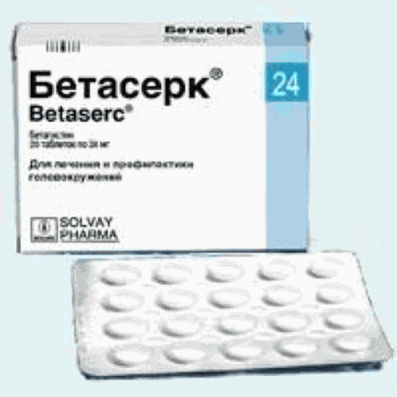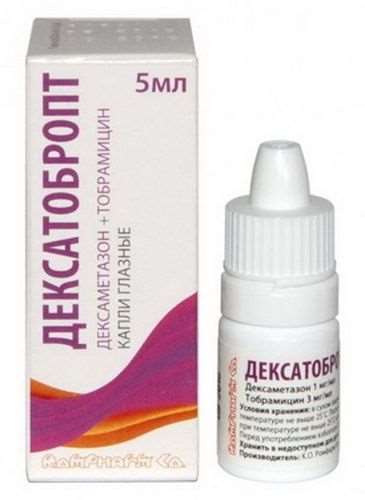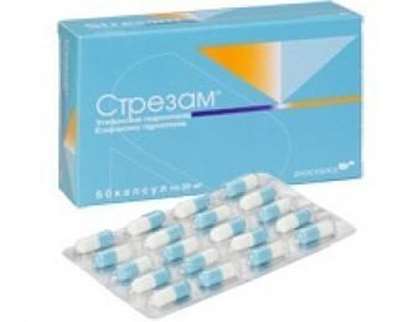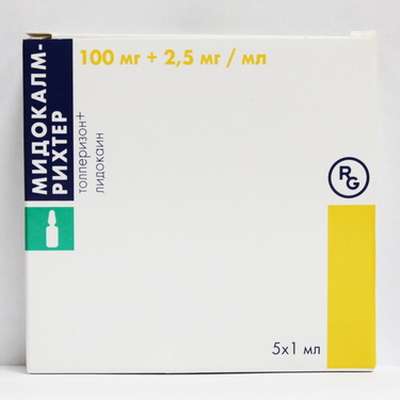Instruction for use: Fenoterol (Fenoterolum)
I want this, give me price
chemical name 5- [1-Hydroxy-2 - [[2- (4-hydroxyphenyl) -1-methylethyl] amino] ethyl] -1,3-benzenediol (hydrobromide salt)
Pharmacotherapeutic group:
Tocolytics
Beta-adrenergic agonist
The nosological classification (ICD-10)
A16.9 Respiratory tuberculosis unspecified, without mention of bacteriological or histological confirmation
Hemoptysis in tuberculosis, Cough in tuberculosis, Pleural effusion with tuberculosis
J42 Chronic bronchitis, unspecified
recurrent bronchitis, Bronchitis asthma, wheeze bronchitis, chronic Bronchitis, Inflammatory airways disease, bronchi disease, Qatar smoker, Cough in inflammatory diseases of the lung and bronchus, Exacerbation of Chronic Bronchitis, Chronic bronchitis, Chronic obstructive pulmonary disease, Chronical bronchitis, Chronic bronchitis smokers, Chronic spastic bronchitis, allergic Bronchitis
J43 Emphysema
Interstitial emphysema, Emphysema, Chronic lung disease, Chronic obstructive pulmonary disease, Obstructive pulmonary emphysema, Chronic pulmonary emphysema, Chronic obstructive pulmonary emphysema
J44 Other chronic obstructive pulmonary disease
Allergic bronchitis, Bronchitis asthma, Asthmatic bronchitis, wheeze bronchitis, Bronchitis is an obstructive, bronchi disease, Shortness of sputum in acute and chronic respiratory diseases, Cough in inflammatory diseases of the lung and bronchus, Reversible airflow obstruction, Reversible obstructive airway disease, Obstructive bronchitis disease, Obstructive lung disease, Obstructive bronchitis, Spastic bronchitis, Chronic lung disease, Chronic nonspecific lung diseases, Chronic obstructive pulmonary disease, Chronic obstructive bronchitis, Chronic obstructive airway disease, Chronic obstructive pulmonary disease, Restrictive lung pathology
J44.9 Chronic obstructive pulmonary disease, unspecified
Obstructive pulmonary diseases, Bronchial obstruction, bronchial obstruction, Exacerbation of chronic obstructive pulmonary disease, reversible airflow obstruction, Reversible airway obstruction, panbronchiolitis, Panbronhit, COPD, Chronic pulmonary infection, Chronic infection of the lower respiratory tract, Chronic obstructive pulmonary disease, Chronic obstructive pneumonia, Chronic lung disease, Chronic obstructive pulmonary disease, Chronic bronchopulmonary disease, Chronic broncho-pulmonary diseases, Airway obstruction
J45 Asthma
Asthma physical effort, status asthmaticus, Bronchial asthma, Asthma lung flow, Bronchial asthma with obstruction of sputum discharge, Bronchial asthma heavy currents, Bronchial asthma physical effort, hypersecretory asthma, Hormone-dependent form of bronchial asthma, Relief of asthma attacks in bronchial asthma, Non-allergic asthma, nocturnal asthma, Exacerbation of asthma, Asthma attacks, Endogenous forms of asthma, Night asthma, Cough with bronchial asthma
J47 bronchiectasis [bronchiectasis]
Bronchiectasis, The infected bronchiectasis, panbronchiolitis, Panbronhit
J62 Pneumoconiosis due to dust containing silica
Silicosis
J98.8.0 * Bronchospasm
Bronchospasm in bronchial asthma, Bronchospasm when exposed to an allergen, bronchospastic reactions, bronchospastic status, bronhospastichesky syndrome, Diseases accompanied by bronchospastic syndrome, reversible bronchospasm, spasmodic cough
J999 * Diagnosis of Respiratory Diseases
bronchography, bronchoscopy, Diagnostic procedures in the nasal passages, Diagnostic Study of the bronchi, laryngoscopy, Preparing for rhinoscopy, Preparing the patient for bronchoscopy and / or bronhografii, Preparing the patient for bronchoscopy or bronhografii, Preparing the patient for diagnostic procedures in the nasal passages, Preparing the patient for diagnostic procedures in the area of the nasal passages, rhinoscopy, Visualization of the chest cavity, Chest X-ray, Mediastinoscopy
N88.3 cervical insufficiency
O20.0 Threatened abortion
Abortion threatening, threatening miscarriage, Spastic conditions with the risk of abortion, Threatened miscarriage in the first trimester of pregnancy, The threat of miscarriage, threatened abortion, The threat of miscarriage, Threatened spontaneous miscarriage
O60 Premature birth
Pregnancy prematurity, The birth premature, Preterm labor pains, Premature contractions prehospital, Immobilization of the uterus before the cesarean section, Immobilization of the uterus, Acute tocolysis, Threatening premature labor, Premature discharge of water, Preventing premature births, The threat of premature birth
O68.0 Births changes complicate fetal heart rate
O69.0 Births complicate prolapse of the umbilical cord
prolapse of the umbilical cord
O69.1 Childbirth is complicated entanglement of umbilical cord around the neck with compression
O71.0 Rupture of uterus before onset of labor
Threatened uterine rupture
O71.1 Rupture of uterus during labor
Threatened uterine rupture
O71.9 Obstetric trauma, unspecified
O82 Childbirth singleton, delivery is by caesarean section
P20 Intrauterine hypoxia
Intrauterine asphyxia, fetal Hypoxia
CodeCAS 13392-18-2
Description
crystalline powder from white to gray-white, odorless or with a faint odor of acetic acid. Soluble in water and 0.1N. hydrochloric acid, poorly soluble in methanol, insoluble in chloroform.
Pharmacological Properties Pharmachologic effect
bronchodilatory, tocolytic, beta-agonists.
Excited beta2-adrenergic receptors activates adenylate cyclase and causes cAMP accumulation. It relaxes the smooth muscles of the bronchi, the membrane stabilizes mast cells and basophils (decreases the release of biologically active substances), improves mucociliary clearance. It increases the frequency and force of heart contractions. It has a tocolytic effect. As applied to the inside and / as a tocolytic agent. Along with decreasing tone and contractile activity of the myometrium improved uteroplacental blood flow, which increases the oxygen concentration in the blood of the fetus.
Indication
Bronchial obstruction: bronchospasm on exertion, spastic bronchitis in children, asthma, chronic obstructive bronchitis, emphysema; bronchopulmonary disease (silicosis, bronchiectasis, tuberculosis). As bronchodilator drugs before the inhalation of other medicines (antibiotics, mucolytic drugs, glucocorticoids). For the bronchodilator test in the study of respiratory function.
In obstetrics: the threat of premature birth, the threat of spontaneous abortion after 16 weeks of pregnancy, after the imposition of purse-string suture at the failure of the cervix, obstructed labor during the opening of the cervix and expulsion of the fetus, intrauterine fetal hypoxia, emergency obstetric conditions (prolapsed cord, threatening uterine rupture) ; Caesarean section (the need to relax the uterus).
Contraindications
Hypersensitivity, tachyarrhythmias, hypertrophic obstructive cardiomyopathy. In obstetrics: multiple pregnancy, pre-eclampsia, eclampsia, bleeding placenta previa, premature detachment of normal or low-lying placenta, violation of fetal heart rate, fetal abnormalities, intrauterine fetal death, intrauterine infections.
Restrictions apply
Diabetes, uncontrolled hypertension, hypotension, mitral (insufficiency and / or stenosis), myocarditis, ventricular flutter, myocardial infarction (acute phase), hyperthyroidism, pheochromocytoma, atonic bowel, hypokalemia, glaucoma, pregnancy, lactation, children's age (under 6 years).
Pregnancy and breast-feeding
As bronchodilatory agents in pregnancy is used with caution (especially in I trimester), unless the effect of therapy outweighs the potential risk to the fetus.
As tocolytic agents used in pregnancy in / or inside of indications and contraindications given.
At the time of treatment should stop breastfeeding (fenoterol excreted in breast milk).
Side effects of substance fenoterol
From the nervous system and sensory organs: tremor, dizziness, headache, nervousness, weakness, change in taste.
Cardio-vascular system and blood (blood, hemostasis): tachycardia, palpitations; when using high doses - Dad lowering and raising garden, arrhythmia, angina pectoris; increase in heart rate of the fetus.
From the side of respiratory system: cough, paradoxical bronchospasm, dryness or irritation in the mouth or throat.
From the digestive tract: nausea, vomiting.
Other: sweating, myalgia and muscle spasm, weakening motility of the upper urinary tract, hypokalemia, allergic reactions.
Interaction
MAO inhibitors, tricyclic antidepressants, anticholinergics, xanthines (theophylline), corticosteroids, diuretics, and other beta-agonists may increase the effects, including side (especially with hypokalemia). Halogenated hydrocarbon anesthetics (halothane, trichlorethylene, enflurane) potentiate the effect on the cardiovascular system. Beta-blockers significantly attenuate activity.
Overdose
Symptoms: tachycardia, palpitation, arterial hyper- or hypotension, increased pulse pressure, anginal pain, arrhythmias, flushing, tremor.
Treatment: the appointment of sedatives, tranquilizers, in severe cases - intensive therapy. As antidotes are recommended cardioselective beta-blockers (atenolol, etc.).
Routes of administration
Inhalation, in / in, inside.
Precautionary measures
In acute, rapidly evolving dyspnoea (difficulty breathing) should consult a doctor immediately. It should be borne in mind that the use of cupping large doses for a long time may cause uncontrolled deterioration of the course of the disease and determine the need for correction of the basic anti-inflammatory therapy with inhaled corticosteroids.
When using beta2-agonists may develop severe hypokalemia. Particular caution should be exercised in severe asthma, as This effect can be enhanced by concomitant use of xanthine derivatives, glucocorticoids, and diuretics. Additionally, hypoxia may enhance the effect of hypokalemia on cardiac rhythm. In such situations, we recommend regular monitoring of potassium serum levels.
Patients with diabetes should regularly monitor blood plasma glucose.
The on / in the introduction of new mothers is necessary to monitor the ECG, heart rate and blood pressure mother (before, during, and after drug administration), fetal heart rate.
With increasing maternal heart rate (130 u. / Min or more than 50% of the original HR) fluctuations in blood pressure or significant dose should be reduced for receiving inward. When the pain in the heart (including compressive) and signs of heart failure drug immediately overturned and conduct ECG monitoring. If the birth took place immediately after the fenoterol treatment, newborns need to conduct a survey to identify hypoglycemia and acidosis (determination of blood pH). Clinical signs of premature detachment of the placenta on the background of tocolytic therapy may be less pronounced. During treatment should avoid excessive fluid intake (risk of pulmonary edema), as well as to monitor the regularity of bowel movements and urine output (especially in eclampsia and kidney disease). Daily fluid intake should not exceed 2 liters. When the early signs and symptoms of fluid retention, pulmonary edema (cough, shortness of breath), the drug should be abolished. In case of violation of membranes and cervical dilatation of 2-4 cm more than the integrity of the effectiveness of tocolytic therapy is unlikely.

 Cart
Cart





